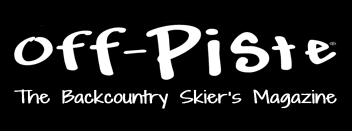Avalanche Safety – Communication in the Backcountry
With ski season comes avalanche season. It’s time to review the practices, communication, behavior and interactions with your ski partners from last season – take an honest and critical look at how the memories measure up on the safety front – think about the days you pushed the comfort zone and the days you played it conservatively.
It’s no secret that avalanche safety hinges on human factors. Human factors – ideas like familiarity with terrain, the expert halo and scarcity (read more here) – rise to the top of the list as the primary contributors to avalanche accidents. But on a broader level, human factors revolve around communication and group interaction. Communication alone will not overcome human factors, but it is an important theme to staying safe in avalanche terrain.
Communication with your ski partners is about sharing questions, opinions, observations, feelings and what you believe to be true. Where do you want to ski? The avalanche forecast highlighted the hazard on north aspects. We saw storm slab activity at treeline earlier this week. How much new snow since Monday? Let’s stop and check beacons before we go any further. When was the last time you were out? Did you read the weather forecast today? I think the sun is affecting the snow. I feel like our route is too exposed. Have you ever been here before? Did you feel that? I’m going to ski right of the main opening. Let’s ski one at a time. Stay left of my tracks. The list goes on and on. In fact, there is no end to good communication. We need to communicate before we put boots on, while we break trail, when evaluating descents and to manage our group. We even need to communicate when the ski day is over.
With the season just getting started, now is the time to revisit your habits, thoughts and experiences from last season. Think about communication and make a resolution to do better – we all can. Whether doing better means skiing with a radio for increased communication or pledging to speak up when you don’t understand or agree with a decision; building communication skills will only help manage human factors in your favor.
More reading on Backcountry Communication and Backcountry Radios
Here are a few good resources to go deeper on communication and safe travel in avalanche terrain.
Slide – the Avalanche Podcast – Regarding communication, I recommend listening to Series 1 Episode 1 from November 2016.
There are numerous good articles on human factors in avalanche safety from the American Avalanche Association.
The Morning Meeting – A piece about the importance of a plan before you put boot to ski.
Designated Radio Channels for Group-to-Group Comms in Popular Backcountry Zones








